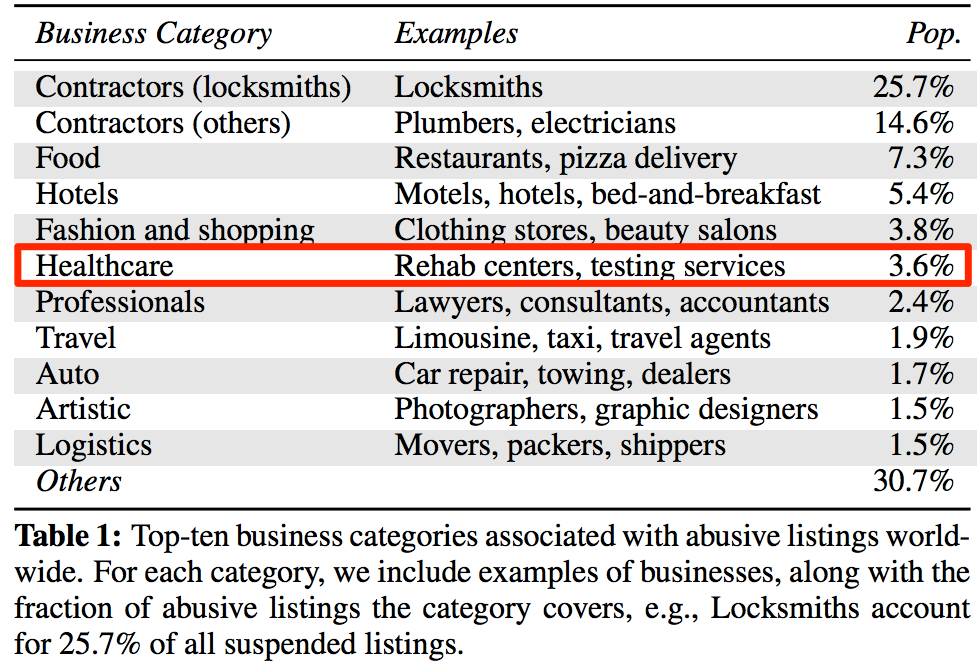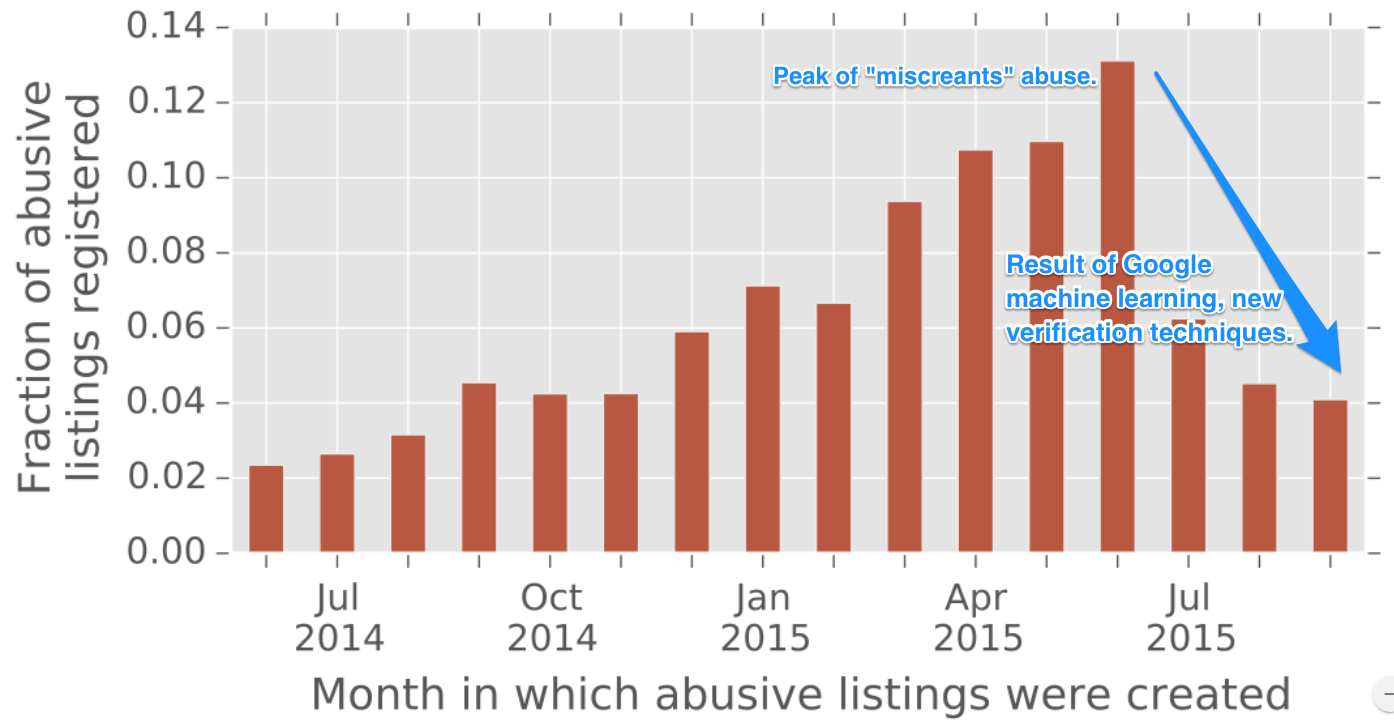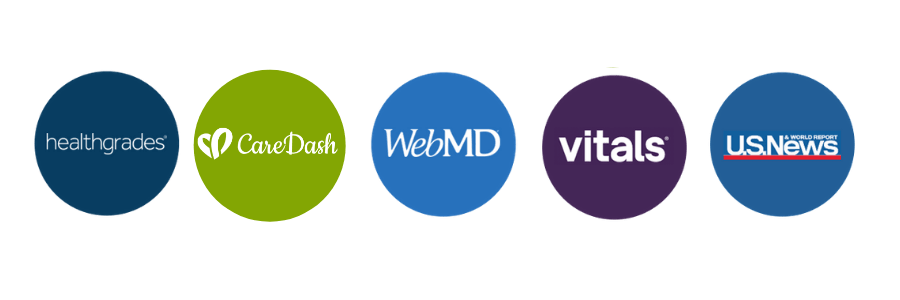Google presented data from their report, Pinning Down Abuse on Google Maps, at the 2017 International World Wide Web Conference.
This detailed report takes a deep dive into Google Maps abuse in an attempt to gain an unfair competitive advantage or to outright scam people:
In this paper, we investigate a new form of blackhat search engine optimization that targets local listing services like Google Maps. Miscreants register abusive business listings in an attempt to siphon search traffic away from legitimate businesses and funnel it to deceptive service industries—such as unaccredited locksmiths—or to traffic-referral scams, often for the restaurant and hotel industry.
Google has been using machine learning and new business verification techniques to combat this problem and the results of these efforts have shown a massive decline in this nefarious behavior:
The majority of the abuse came from on-call service industry businesses such as locksmiths, plumbers, and electricians which is part of the reason why there’s the Google Guarantee Program to help protect consumers and provide Google users a better search experience (you don’t want your top search results ripping people off).
However, healthcare made the top list of abusers as well. Check out this chart from the Google report:
Top 10 Google Maps Abusers – Listed By Business Category

Healthcare is #5 on the Top 10 list of Google Maps abusers (contractors is one category, segmented to show specific categorization). The 3.6% number for Healthcare represents the percentage of all Google Map abusers attributed to the Healthcare business category.
How Google Map Abuse Happens – Getting Around the Google Verification Process
With Google Maps you can register a listing via mail verification or phone verification.
Phone Verification Abuse
In the table below, Section 5.3 (e) VoIP, you’ll see a high percentage number, 59.8%, associated with the Healthcare category.
Overall, Google has found that 69% of abusive listings that publish phone numbers “rely on cheap, disposable VoIP numbers.”
Google has found that this practice happens the most for what they call “on-call” listings. Listings are differentiated by being on-call, a mobile business like a locksmith that visits a customer at home, or on-premise, where a customer or patient would visit a physical office or location..
So as the chart shows, the most abusive on-call listings belong to locksmiths (90.6%), general contractors (67.4%), and healthcare services (59.8%).
The report explains this method of deception in detail:
Customers dial what appears to be local phone numbers but are in fact VoIP numbers. The calls are subsequently routed to call centers, which refer the callers to actual local service providers. In contrast, legitimate on-premise business listings like hotels and restaurants rarely use VoIP phone numbers.
Percentage US Google Map Listings with Known Abusive Behavior – Listed By Business Category

Mail Verification Abuse
The other method of Google Maps abuse is via mail verification.
What happens in this scenario is that the abuser or, “miscreant” as Google delightfully calls them, claims the business listing online which triggers the postcard verification to be sent. You can read more here about how to setup your Google My Business profile.
Next the miscreant waits a few days. The Google verification postcards can take up to a week to arrive. Once they’re sure that the postcard has probably been delivered, they call up the business and “trick the owner or employee into revealing the verification PIN on the postcard, and subsequently take over their Google My Business account.”
Once they have control of your account they can replace your original listing with a new one that links to whichever website they choose.
The lesson here is that you should never give out your Google verification PIN number to someone you don’t know. If you’re not working with a marketing service like InboundMD, there’s no reason to ever let that information leave your practice.
How Google is Fighting Google Maps Abuse and Fake Listings
Currently, in the words of internet marketer and Google-watcher Mike Blumenthal, Google defines fake listings as “listings that were in gross violation of the guidelines and caught by their [algorithm] or human curation and suspended.”
A fake listing also does not include “any listing that had manipulated their reviews,” says Blumenthal. So, which is more harmful, he asks, “A locksmith with a fake address or a chiropractor with 100 fake reviews?”
We’ll tackle the topic of fake reviews in another post.
For now, Google has taken the following steps to reduce fake listings, spam, and fraud:
- Advanced verification is required for for select business categories (locksmiths, plumbers, etc. – the ones exhibiting the most abuse)
- No bulk registrations
- Scrutinizing business relocation attempts
- Updated Google anti-spam machine learning systems to recognize the patterns of deceptive listings.






